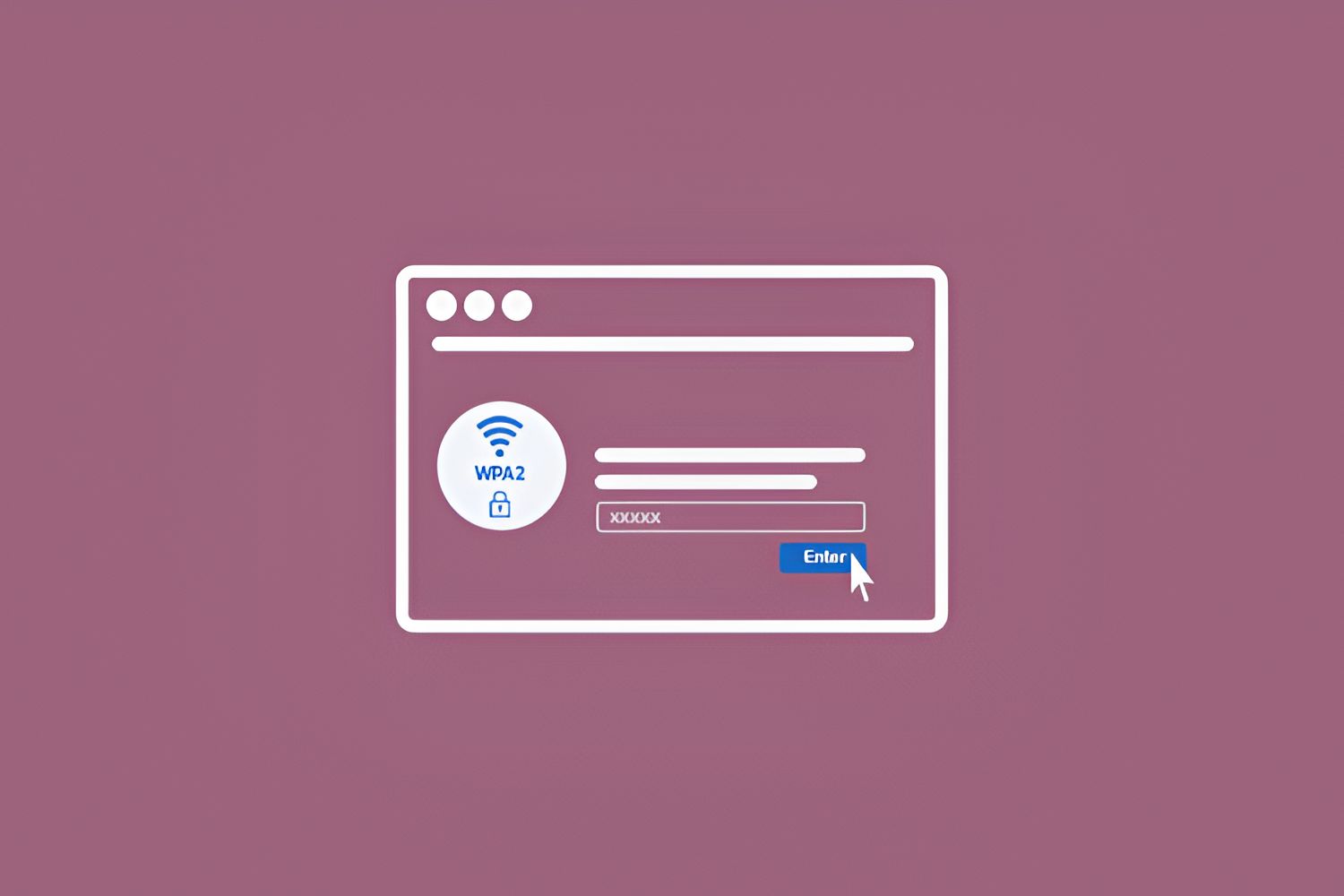Introduction
Peer-to-peer (P2P) attacks have become a prevalent and concerning issue in today’s digital landscape. With the increasing reliance on interconnected devices and the widespread adoption of the internet, cybercriminals are finding creative ways to exploit vulnerabilities and compromise computer systems.
A P2P attack refers to a malicious activity where cybercriminals leverage P2P networks to infiltrate and control computers. P2P networks, known for their decentralized nature, allow users to connect directly with each other without the need for intermediaries. This decentralized approach becomes a double-edged sword, as it opens up opportunities for attackers to exploit the trust and connectivity of these networks.
Understanding how a P2P attack works is crucial for both individuals and organizations to protect themselves and their sensitive information. By familiarizing ourselves with the methods employed by cybercriminals, we can implement proper security measures to mitigate the risks.
In this article, we will delve into the mechanics of a P2P attack and explore the various steps involved in executing such an attack. By gaining insights into the lifecycle of a P2P attack, we can better comprehend the potential risks and take proactive measures to safeguard our digital assets.
So, let’s dive into the intricacies of P2P attacks and unravel the techniques employed by cybercriminals to compromise our systems and data.
What is a P2P Attack?
In order to understand how a P2P attack works, it’s important to first grasp the concept of a P2P attack itself. A P2P attack refers to a malicious activity where cybercriminals exploit the connectivity of peer-to-peer networks to compromise computer systems and steal sensitive information.
P2P networks are decentralized networks where users connect directly with each other, allowing for the sharing of files, resources, and data without the need for intermediaries. This distributed nature makes P2P networks popular for file sharing, communication, and collaborative efforts.
However, this very decentralization and direct connectivity that makes P2P networks efficient and convenient also create a favorable environment for cybercriminals to execute malicious activities. By infiltrating these networks, attackers can gain unauthorized access to connected devices, inject malware, and exfiltrate sensitive data.
One key aspect of a P2P attack is the exploitation of trust within the network. Users in a P2P network inherently trust the authenticity and integrity of the shared resources and the connections established with other users. This trust becomes the vulnerability that attackers capitalize on to gain control over devices and extract valuable data.
P2P attacks can take various forms, including but not limited to:
- File Sharing Attacks: Attackers may disguise malware-infected files as legitimate files and share them through P2P networks. When unsuspecting users download these files, their devices become compromised.
- Botnet Attacks: Attackers can create a P2P botnet by infecting multiple devices within the network. These devices then become controlled by the attacker, who can use them to launch further attacks or perform illegal activities.
- Man-in-the-Middle Attacks: By intercepting and tampering with the direct communication between two or more users in a P2P network, attackers can eavesdrop on sensitive information or manipulate the data being exchanged.
- Distributed Denial of Service (DDoS) Attacks: P2P networks can be exploited to orchestrate large-scale DDoS attacks, where multiple compromised devices flood a target system or network with traffic, causing interruptions or service outages.
It is crucial to recognize the potential risks associated with P2P attacks and take proactive measures to protect ourselves and our systems from falling victim to these malicious activities.
How Does a P2P Attack Work?
A P2P attack follows a series of orchestrated steps that enable cybercriminals to infiltrate, exploit, and control devices in a P2P network. Understanding these steps can help us identify potential vulnerabilities and implement effective countermeasures.
Step 1: Discovery
The first step in a P2P attack involves the attacker discovering vulnerable devices within the network. This can be done through various means, such as scanning for open ports, exploiting weak passwords, or taking advantage of unpatched software vulnerabilities. Once a vulnerable device is identified, the attacker proceeds to the next step.
Step 2: Connection
In this step, the attacker establishes a connection with the vulnerable device. This can be achieved by leveraging the P2P network’s connectivity mechanisms, such as initiating a direct connection with the device or exploiting weak authentication protocols. Once the connection is established, the attacker gains a foothold in the device.
Step 3: Exploitation
With a foothold in the vulnerable device, the attacker exploits the device’s vulnerabilities to execute their malicious objectives. This can involve injecting malware, executing remote commands, or tampering with system settings to gain full control over the device. By exploiting weaknesses in the device’s security defenses, the attacker maintains persistence within the network.
Step 4: Propagation
Once the attacker has control over a vulnerable device, they can leverage it to propagate the attack further within the P2P network. This can be achieved by infecting other connected devices, spreading malware-infected files, or exploiting vulnerabilities in the network’s protocols. The goal is to expand the attacker’s control and establish a larger botnet or infect a larger number of devices.
Step 5: Control and Command
At this stage, the attacker has established a network of compromised devices under their control. They can now issue commands, remotely control the devices, exfiltrate sensitive data, launch further attacks, or engage in illegal activities. The attacker’s command and control infrastructure enable them to operate stealthily and maintain their control over the compromised devices within the P2P network.
By understanding the step-by-step process of a P2P attack, we can take proactive measures to protect our devices and networks. Implementing strong security measures, such as regularly updating software, using robust passwords, and deploying firewalls and antivirus software, can go a long way in preventing and mitigating the risks associated with P2P attacks.
Step 1: Discovery
The first step in a P2P attack is the discovery of vulnerable devices within the network. Cybercriminals employ various techniques and tools to identify potential targets and exploit their vulnerabilities.
One method commonly used in this discovery phase is port scanning. Cybercriminals scan P2P networks for devices with open ports, which are indicative of potential vulnerabilities. An open port can be an invitation for attackers to exploit weaknesses in the device’s security defenses, allowing them to gain unauthorized access.
Another approach in the discovery process is the exploitation of weak passwords. Attackers use automated tools that systematically try commonly used passwords or common variations of passwords to gain access to devices in the network. Devices with default or easily guessable passwords become prime targets for attackers during the discovery phase.
Cybercriminals also take advantage of unpatched software vulnerabilities in this stage. They search for devices within the P2P network that are running outdated software versions or have not applied the latest security patches. These devices become susceptible to attacks as their vulnerabilities can be easily exploited by attackers.
The discovery phase is typically an automated process, wherein attackers utilize specialized tools and scripts to scan the network and identify potential targets. They look for devices with weak security configurations, outdated software, or other vulnerabilities that can be exploited.
It is essential, as users and organizations, to be proactive in securing our devices and networks. Regularly updating software, applying security patches, and using strong and unique passwords can significantly reduce the chances of falling victim to a P2P attack during the discovery stage.
Furthermore, implementing network-level security measures such as firewalls, intrusion detection systems, and access control policies can add an additional layer of defense against potential attackers during the discovery phase.
By understanding how cybercriminals discover vulnerable devices within P2P networks, we can take the necessary precautions to fortify our systems and prevent unauthorized access and exploitation of our devices and data.
Step 2: Connection
Once cybercriminals have discovered vulnerable devices within a P2P network, the next step in a P2P attack is establishing a connection with those devices. This connection provides attackers with a foothold and allows them to proceed with their malicious activities.
Attackers can establish a connection with a vulnerable device using various techniques. One common method is to take advantage of the direct connectivity inherent in P2P networks. By leveraging the network’s protocols, attackers can initiate a direct connection with the target device, bypassing any network-level security measures in place.
Another approach cybercriminals use is to exploit weak authentication protocols or default login credentials on the target device. Many users, either out of convenience or lack of awareness, fail to change the default passwords provided by manufacturers or choose weak passwords that are susceptible to brute force attacks.
Additionally, hackers may employ social engineering techniques to trick users into disclosing their login credentials or provide access to their devices. This can include phishing emails or fake websites designed to mimic legitimate login pages, fooling users into willingly handing over their access credentials.
Once the connection is established, attackers gain a level of control over the vulnerable device. This control allows them to proceed with the next steps in the P2P attack, such as the exploitation of vulnerabilities and the propagation of malware.
To protect against this stage of a P2P attack, it is crucial to strengthen the security of our devices and networks. This includes regularly updating firmware and software to patch known vulnerabilities, implementing strong and unique passwords, and enabling multi-factor authentication wherever possible.
Furthermore, it is essential to be cautious and skeptical of unsolicited communication or requests for login credentials. Double-checking the legitimacy of requests and verifying the authenticity of websites and email sources can help mitigate the risk of falling victim to social engineering tactics.
By understanding how attackers establish a connection with vulnerable devices within a P2P network, we can take proactive measures to defend against these intrusion attempts and ensure the security and integrity of our systems and sensitive information.
Step 3: Exploitation
After establishing a connection with a vulnerable device in a P2P network, the next step in a P2P attack is the exploitation of the device’s vulnerabilities. Attackers leverage these weaknesses to gain unauthorized access, take control of the device, or execute their malicious objectives.
Exploitation can take various forms, depending on the specific vulnerabilities present in the target device. Common techniques used by attackers during this stage include:
- Injecting Malware: Attackers may inject malicious code or malware into the compromised device. This malware can be designed to perform various malicious activities, such as stealing sensitive data, logging keystrokes, or establishing persistence on the device for future attacks.
- Remote Command Execution: Exploiting vulnerabilities, attackers can execute remote commands on the compromised device. This allows them to manipulate system settings, install additional software or tools, or perform any action that grants them full control over the device.
- Tampering with Security Defenses: Attackers may disable or manipulate the device’s security defenses, such as firewalls or antivirus software, to avoid detection and maintain their control over the compromised device.
During the exploitation stage, attackers aim to maximize their control and access to the compromised device, enabling them to proceed with further malicious activities or using the device as part of a larger botnet.
To mitigate the risks associated with exploitation, it is crucial to implement strong security practices. Regularly updating software and firmware, applying security patches promptly, and using reputable antivirus software can help identify and prevent known vulnerabilities from being exploited.
Additionally, maintaining strong access controls, such as using complex and unique passwords, practicing the principle of least privilege, and enabling multi-factor authentication, reduces the chances of successful exploitation by limiting unauthorized access to devices.
By understanding the techniques used by attackers during the exploitation stage, we can take proactive measures to fortify our systems, stay vigilant for any signs of intrusion, and respond promptly to mitigate the impact of a P2P attack.
Step 4: Propagation
Once cybercriminals have successfully compromised a device within a P2P network, the next step in a P2P attack is propagation. This step involves the expansion of the attack by infecting other connected devices or spreading malware-infected files within the network.
Attackers use various methods to propagate the attack, taking advantage of the interconnected nature of P2P networks. Some common techniques and strategies used during this stage include:
- Infecting Other Devices: With control over the initially compromised device, attackers can leverage it to infect other vulnerable devices within the network. They can use various techniques, such as exploiting unpatched vulnerabilities or exploiting weak authentication protocols, to gain unauthorized access to additional devices.
- Spreading Malware-Infected Files: Attackers may leverage the trust between users in a P2P network to spread malware-infected files. They can disguise these files as legitimate software, media files, or documents, making them enticing for users to download and unknowingly become victims of the attack.
- Exploiting P2P Network Protocols: P2P networks rely on specific protocols for file sharing and communication. Attackers can exploit vulnerabilities in these protocols to propagate the attack or to inject malicious code into the network. This can lead to further compromise of devices and the spread of malware.
By expanding the attack to other devices within the network, attackers establish a larger base of compromised devices under their control. This can serve their objectives, such as establishing a botnet, increasing their compute power for future attacks, or exfiltrating sensitive data from multiple sources.
To mitigate the risks associated with propagation, it is crucial to maintain a strong security posture within our networks. This includes regularly updating software and firmware on all connected devices, applying security patches promptly, and using reliable antivirus and anti-malware software.
Practicing safe browsing habits, being cautious when downloading files from P2P networks, and using reputable sources for software downloads can significantly reduce the risk of downloading and unintentionally spreading malware-infected files.
Additionally, having network-level security measures, such as firewalls, intrusion detection systems, and traffic monitoring, can help detect suspicious activities and prevent the spread of malware within the network.
Understanding the propagation strategies employed by attackers in a P2P attack enables us to implement proactive measures to prevent the spread of malware and limit the impact of an attack on our devices and networks.
Step 5: Control and Command
After successfully propagating the attack within a P2P network, the final step in a P2P attack is establishing control and command over the compromised devices. This stage allows cybercriminals to remotely manage and utilize the compromised devices to further their malicious objectives.
With control and command established, attackers gain full access to the compromised devices, enabling them to:
- Issue Commands: Attackers can remotely send commands to the compromised devices, instructing them to perform specific actions. These actions can range from launching further attacks, exfiltrating sensitive data, or participating in coordinated malicious activities such as distributed denial-of-service (DDoS) attacks.
- Maintain Persistence: Control and command infrastructure enables attackers to maintain persistence within the compromised devices, ensuring long-term control over the network. They can use techniques such as rootkits, backdoors, or remote access trojans (RATs) to ensure their continued access and control, even after system reboots or security measures are implemented.
- Exfiltrate Data: Attackers can extract sensitive data or confidential information from the compromised devices. This can include personal information, financial data, intellectual property, or any other valuable data stored on the compromised devices.
Control and command networks used by attackers are typically designed to be resilient and evade detection. They employ various techniques to remain hidden and avoid being traced by security measures. This can include the use of encryption, anonymous communication channels, or leveraging compromised devices as proxy servers to obfuscate their tracks.
To protect against control and command activities in a P2P attack, it is crucial to have robust security measures in place. This includes implementing intrusion detection and prevention systems (IDPS), network traffic analysis tools, and advanced threat detection solutions.
Regular monitoring and analysis of network traffic and system logs can help identify any unusual or suspicious activities that may indicate the presence of control and command infrastructure. Promptly isolating compromised devices, removing malicious software, and updating security measures can limit the impact of an attack and prevent further damage.
By understanding the control and command stage of a P2P attack, we can enhance our defensive strategies and methodologies, making it more challenging for attackers to maintain persistent control over our devices and networks.
Case Study: The Conficker Worm
The Conficker worm, first discovered in late 2008, serves as a prominent case study highlighting the destructive capabilities of P2P attacks. Conficker targeted Windows operating systems and infected millions of computers worldwide, illustrating the devastating impact that a well-executed P2P attack can have.
Conficker spread primarily through the exploitation of a vulnerability in Microsoft Windows Server service. Once a device was infected, the worm used P2P communication to propagate itself within the network, making it difficult to detect and control. It also employed sophisticated techniques to evade antivirus and security measures, further exacerbating its impact.
The spread of Conficker was unprecedented, infecting not only home computers but also corporate networks, government systems, and critical infrastructure. It demonstrated the power of a P2P attack to disrupt organizations and exploit their dependence on interconnected systems.
The Conficker worm’s ability to evolve and update itself added to the challenge of eradicating the infection. It had a self-updating mechanism that allowed it to download new versions with enhanced capabilities, making it even more resilient to detection and removal.
The impact of Conficker extended beyond just infecting devices. It was responsible for launching large-scale distributed denial-of-service (DDoS) attacks, stealing sensitive data, and creating a network of compromised devices that attackers could control and exploit for their criminal activities.
Efforts to combat the Conficker worm involved collaborations between security researchers, organizations, and law enforcement agencies. Antivirus companies released specific tools for detection and removal, and Microsoft offered patches to address the vulnerability exploited by the worm.
While significant progress was made in containing and mitigating the Conficker infection, it serves as a reminder of the sophistication and persistence of P2P attacks. It highlights the importance of regular updates, system security measures, and user awareness to prevent such widespread infections.
Overall, the Conficker worm case study underlines the need for constant vigilance and robust security practices to defend against P2P attacks. It demonstrates the potential impact of these attacks and emphasizes the importance of proactive defense to protect our systems and networks from such pervasive threats.
Preventing P2P Attacks
Prevention is the best defense against P2P attacks. By implementing proactive security measures and following best practices, we can significantly reduce the risk of falling victim to these malicious activities. Here are some essential steps to help prevent P2P attacks:
- Keep Software and Firmware Updated: Regularly update software, operating systems, and firmware on all devices connected to a P2P network. This ensures that known vulnerabilities are patched, making it harder for attackers to exploit them.
- Use Strong and Unique Passwords: Employ strong, complex passwords for all devices and accounts. Avoid reusing passwords and consider using a password manager to securely manage and generate unique passwords.
- Enable Multipart Authentication: Implement multi-factor authentication (MFA) whenever possible. This adds an additional layer of security by requiring an extra verification step, such as a fingerprint scan or a one-time password, in addition to the password.
- Implement Network-Level Security: Utilize firewalls, intrusion detection and prevention systems (IDPS), and network traffic monitoring tools to detect and prevent unauthorized access attempts and malicious activities within the network.
- Deploy Reliable Antivirus Software: Install reputable antivirus and anti-malware software on all devices to detect and block malicious files and activities. Regularly update the antivirus software to ensure the latest threat definitions are in place.
- Practice Safe Browsing Habits: Be cautious when downloading files from P2P networks and only obtain files from trusted sources. Avoid clicking on suspicious links or downloading files from unverified websites.
- Regularly Back Up Data: Regularly back up important data to an external storage device or a secure cloud backup service. In the event of a successful P2P attack, backups can help restore lost or compromised data without having to pay ransom or suffer data loss.
- Stay Informed and Educated: Keep up with the latest news and developments in cybersecurity. Stay informed about new attack techniques and security best practices. Regularly educate yourself and your employees about the risks and preventive measures against P2P attacks.
Preventing P2P attacks requires a proactive and holistic approach to security. It involves a combination of technical measures, user awareness, and ongoing vigilance. By implementing these preventive measures, we can significantly reduce the chances of falling victim to P2P attacks and better protect our devices, networks, and sensitive information.
Conclusion
P2P attacks pose a significant threat in today’s interconnected world. Understanding how these attacks work and the steps involved is crucial for individuals and organizations to protect themselves from the potential consequences.
Throughout this article, we explored the various stages of a P2P attack, including discovery, connection, exploitation, propagation, and control and command. We also delved into a case study, examining the impact of the Conficker worm and highlighting the devastating consequences of a well-executed P2P attack.
To prevent P2P attacks, it is essential to implement proactive security measures. This includes keeping software and firmware up to date, using strong and unique passwords, enabling multi-factor authentication, implementing network-level security measures, and deploying reliable antivirus software.
Additionally, practicing safe browsing habits, regularly backing up data, and staying informed and educated about the latest cybersecurity threats and best practices can greatly enhance our defenses against P2P attacks.
By taking these preventive measures, we can significantly reduce the risk of falling victim to P2P attacks, protect our devices and networks, and safeguard our sensitive information from malicious actors.
As the digital landscape continues to evolve, it is crucial to remain vigilant and adaptive to emerging threats. By staying proactive, informed, and practicing good cybersecurity hygiene, we can fortify our defenses and mitigate the risks associated with P2P attacks.

























